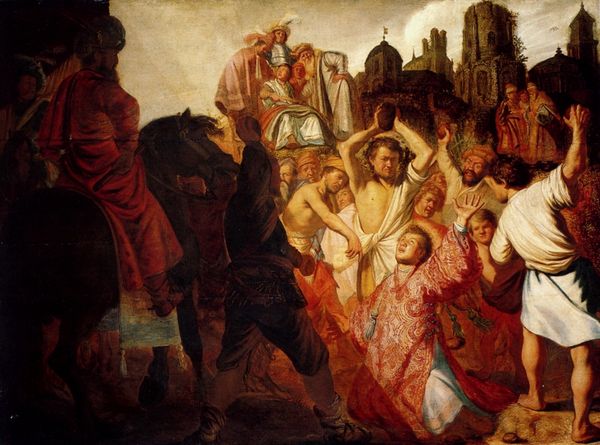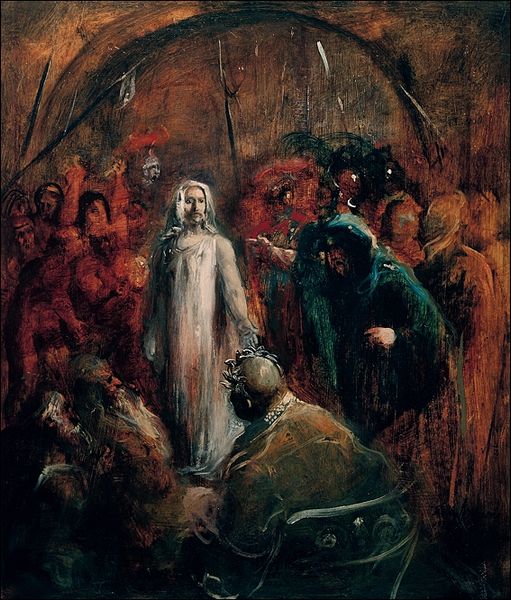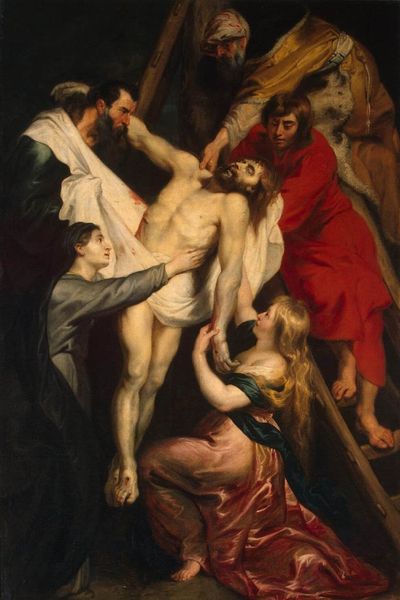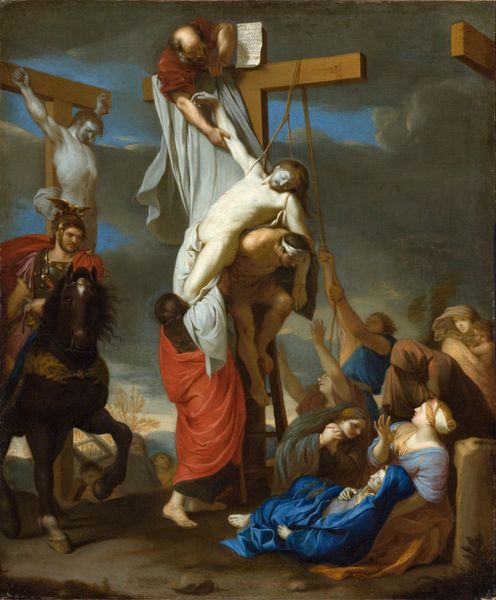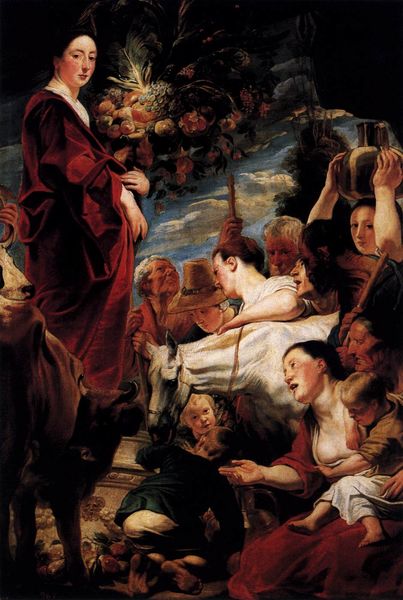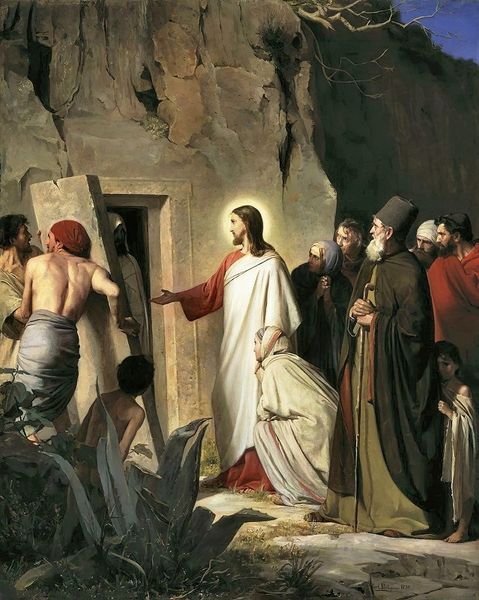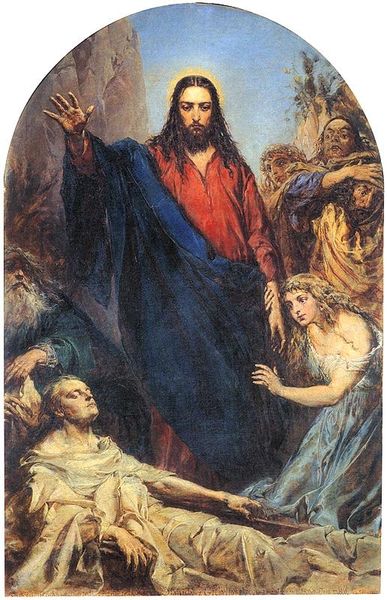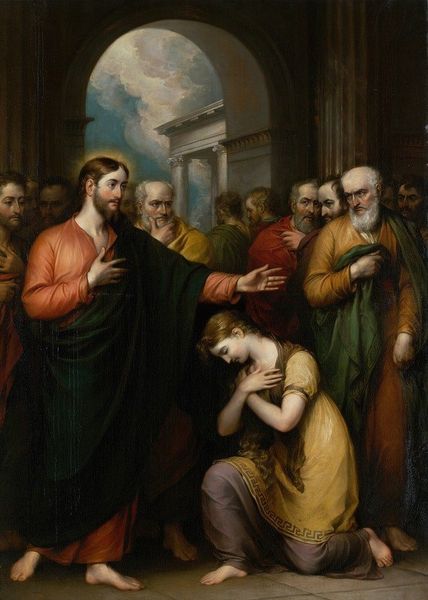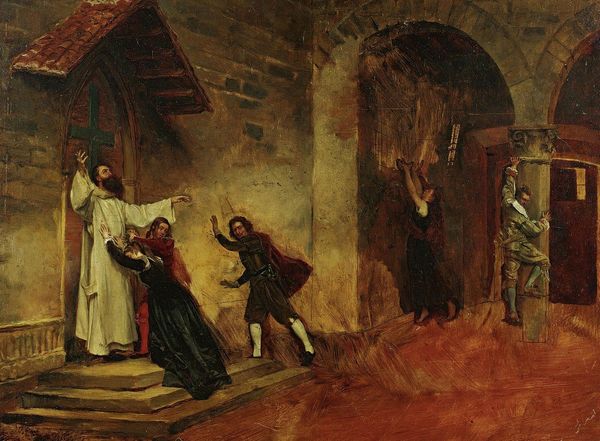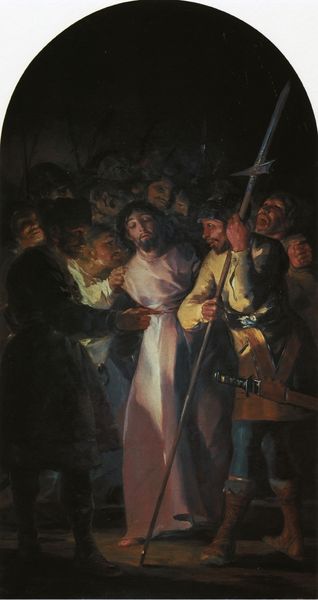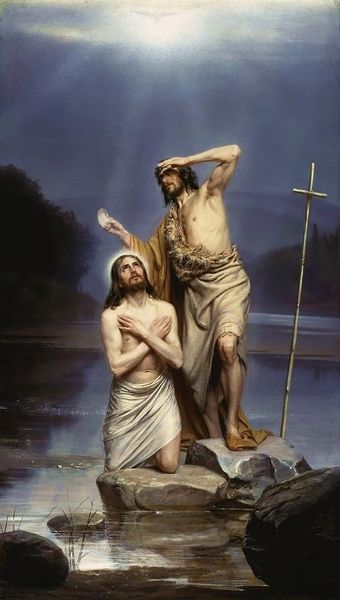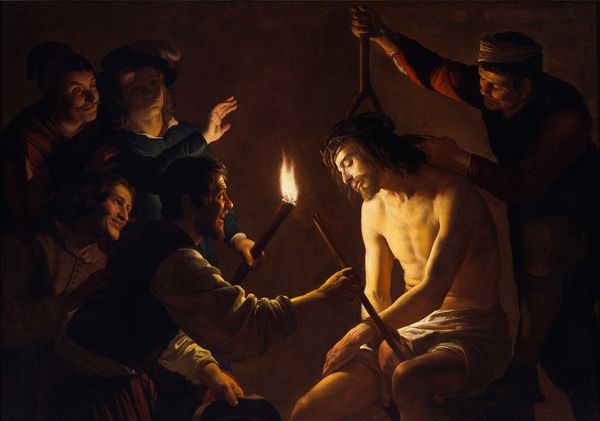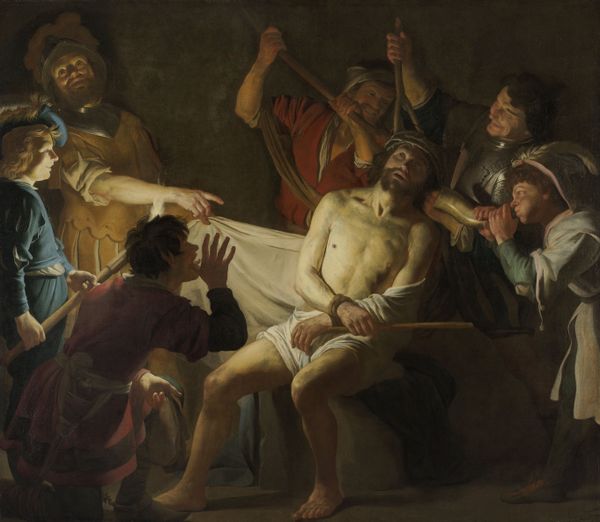
Copyright: Public Domain: Artvee
Curator: Examining Jean Béraud's "Christ Lié à la Colonne," painted in 1901 using oil on canvas, let's delve into its depiction of Christ bound to a column. Editor: It's interesting how Béraud rendered this scene in oil paint. The red robe really pops, doesn’t it? What strikes you about the materiality and production of this work? Curator: Absolutely. Consider the socio-economic context and the role of painting during this era. The choice of oil, the size of the canvas, and Béraud’s skill – these weren't merely artistic choices. They reflect the power dynamics of the art market and the artist’s position within it. Notice the blood-stained apron and cleaver on the butcher's side of the painting - these items indicate his social and economic role within the market. The labor is very clear in the work shown here. Editor: I see. So you’re saying the materials and the very act of painting itself were tied to larger social and economic forces at play? Do you think there is an aspect of classism presented with the butcher? Curator: Precisely. How were these materials sourced? Who was consuming paintings like this, and what did it signify about their status? We must look past just the subject matter and understand the conditions of the artwork's making. Think of the role materials play - this work challenges traditional boundaries of high art and craft by allowing an examination of labor and materiality to emerge. Editor: That's a different way of thinking about art than I am used to! Thank you! I hadn't really considered the socioeconomic side of the materials before. Curator: Exploring that context offers rich insights beyond aesthetics or symbolism, which hopefully grants us a different perspective and shows the significance of each tool.
Comments
No comments
Be the first to comment and join the conversation on the ultimate creative platform.
